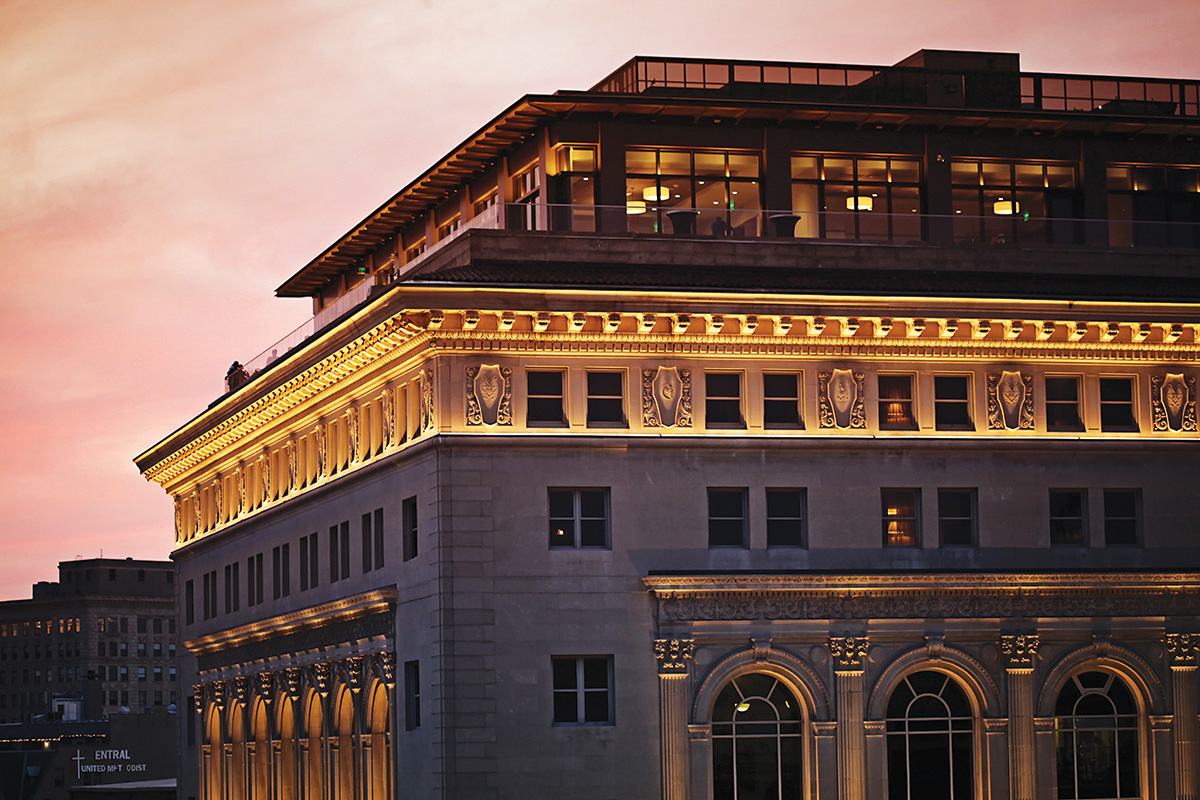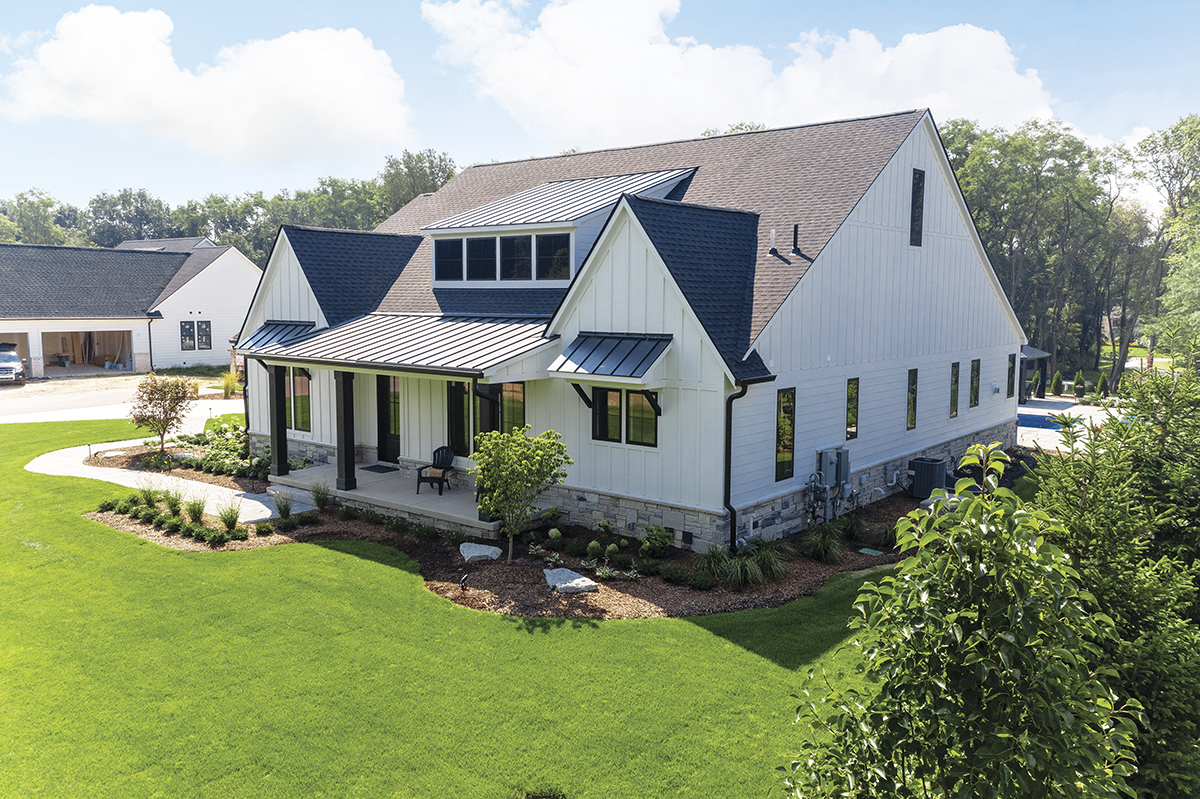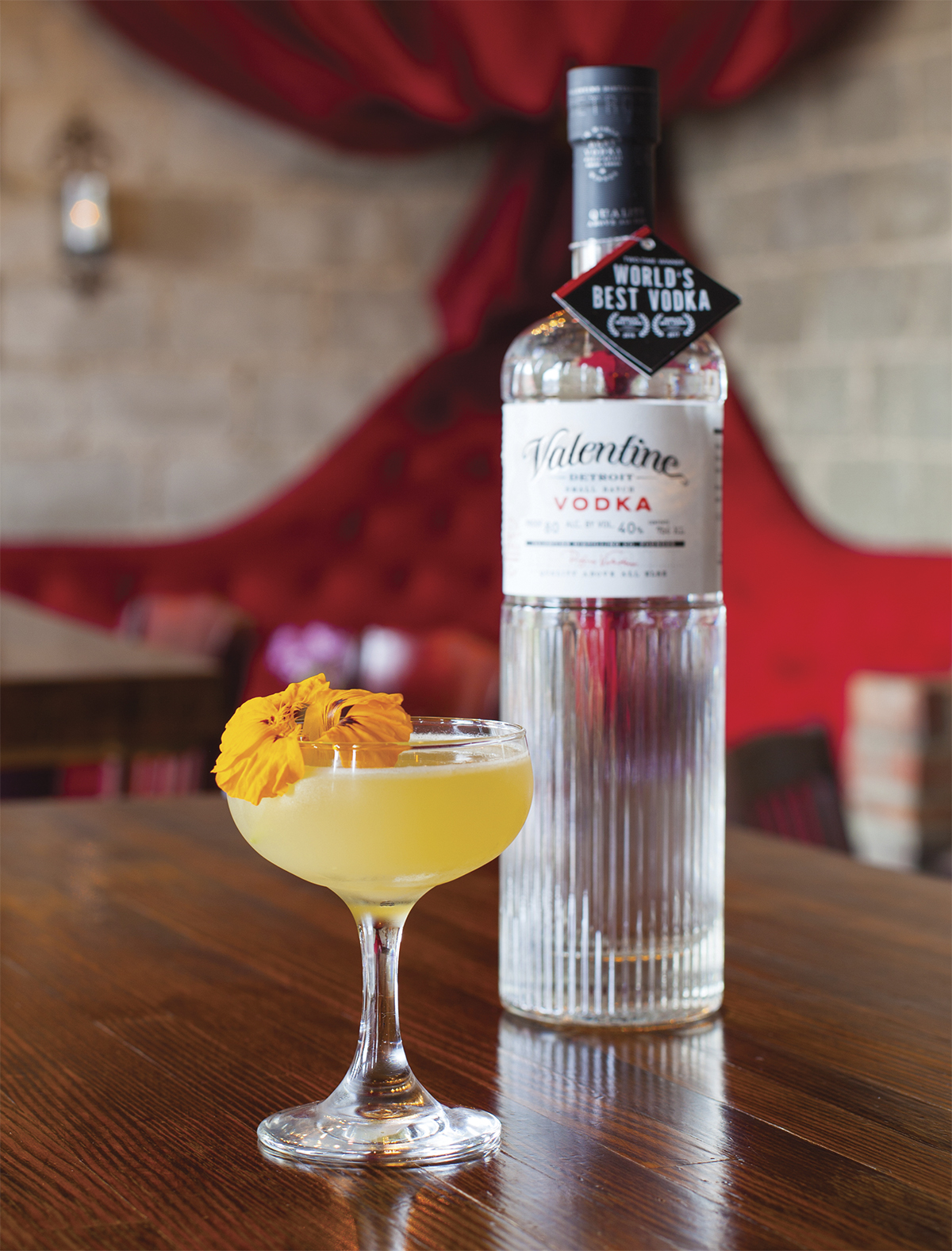WRITER | RACHEL WHITE
PHOTOS | DETROIT ATHLETIC CLUB
Detroit Proud
Built over 100 years ago, the prestigious Detroit Athletic Club, a seven-story edifice designed by famed architect Albert Kahn, is still standing strong, and so is the membership within it. Executive manager Ted Gillary credits this to a number of factors, the most important being the community. “We have built a community that creates relationships, a place where people find a home,” he says.
The DAC was originally founded in 1887 as an amateur athletic club on Woodward Avenue. Its impressive current home on Madison Avenue was built in 1915, so the who’s who in Detroit had a social club to mix and mingle.
Detroit was at that time a model of American innovation, and the building followed that example. It was modeled after Roman palazzos that the architect saw on his journeys to Italy. In particular, the grandiose fourth-floor windows in the dining room, called the Grill Room, were designed after the Renaissance architecture of the Palazzo Farnese. In a 1915 article from the Detroit Saturday Night, titled “An Architectural Triumph,” Kahn himself writes “The exterior depends entirely, for its effect, upon the window and door openings, the material used (Bedford limestone), and the powerful cornice which is entirely cut stone.” The club was constructed with three distinct sections: The first and second floors were to be for social affairs and included the grand entrance hall, billiard room, and lounging room. The third and fourth floors were intended for athletics, and indeed, the swimming pool on the fourth floor was the first of its kind when built, and is still in use today. The top floors were originally designed to be residential.
Since 1998, the DAC has been on a renovation track that included sculptures for the community to enjoy and an enlarged vestibule for the entryway, giving the space a more welcoming feel. “We continue to reinvest,” says Gillary, “making a beautiful environment where our members and guests can find programming and friendship.”
During its centennial in 2015, the DAC unveiled a major expansion, which included a 9,000-plus-square-foot rooftop plaza. The top floor includes a cigar room, meeting rooms, and a cafe. The space is glass walled and includes an outdoor patio, both of which allow amazing vistas of downtown Detroit, including an overlook into Comerica Park. “The location has only gotten better over time,” notes Gillary. “The view is now of a thriving metropolitan area.” Indeed, Kahn also notes that over 100 years ago, “No doubt, the setting of the building, upon its magnificent site, facing a wide avenue, has much to do with the general effect.”
But it’s what happens inside that really matters, and the focus continues to be on athletics. The club offers choices focused on wellness and helping people achieve their best. From yoga to squash to the spa, there is something for everyone. The DAC boasts the largest private bowling league in the country. Last year, the DAC started the Detroit Cycling Championship, which will bring the world’s best cyclists to Michigan each year and includes a family fun ride and kid’s race.
The DAC is also proud of the Olympic dreams nourished here. There is a history of assistance and opportunities for training. In the 1950s, a springboard silver medalist in the Melbourne Olympic Games was sponsored by the DAC. Currently, the club is sponsoring a swimmer — Alexandra DeLoof — who qualified for the US Olympic team trials last June and is hoping to one day make it on the team.
Yes, the DAC is famous around the world – not just for its architecture and remarkable members list, but for something else too… a storied cocktail. It seems that around 1916, a specialty drink called “The Last Word” was served at a party at the DAC. The drink was a big-ticket item at 35 cents, compared to 15 cents for a martini or a Manhattan. Apparently, the famous vaudevillian Frank Fogarty was at the party. With the onset of Prohibition the following year, no drinks of any kind were served at the club for many years, but Fogarty had taken the drink to New York, where it caught on. There was mention of it in a 1950s cocktail book called Bottoms Up. It was given a third life in 2003 when celebrated Seattle bartender Murray Stenson found the recipe in the book, served it, and it caught on in a big way. The Detroit drink made its way to New York, California, and all over the world. It came home to the DAC in 2009, returned to its rightful place on the menu. The DAC even named the rooftop bar after the illustrious cocktail.
Not making a trip to the Detroit Athletic Club? You can try mixing the drink at home; it’s a beautiful spring green color that will look and taste great at your next garden party.
Like the Last Word, the city that it hails from is making a comeback. The Detroit Athletic Club truly embodies the energy of a once powerful city, bent but never broken, revitalized and flourishing anew. Detroit proud.
The Last Word
Courtesy of the Detroit Athletic Club
In equal parts –
¾ Oz. Dry Gin
¾ Oz. Maraschino Liqueur
¾ Oz. Chartreuse
¾ Oz. Fresh Lime Juice
Combine ingredients in a cocktail shaker with ice, shake briskly for 10 seconds. Strain into a cocktail glass.
Detroit Athletic Club 241 Madison Street, Detroit MI 48226 l (313) 963-9200 l TheDAC.com













